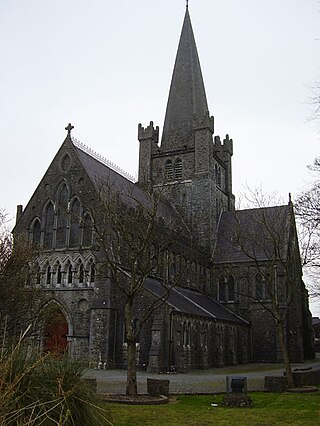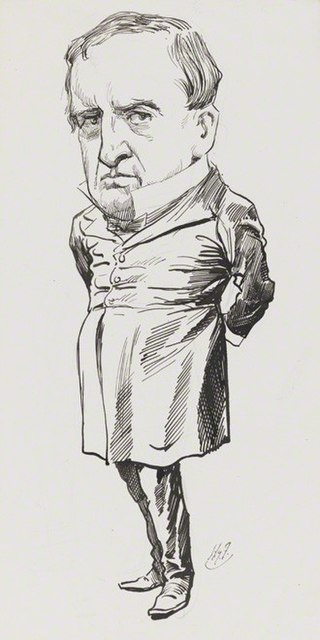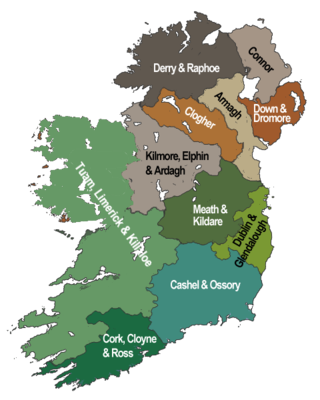Related Research Articles
Earl of Clancarty is a title that has been created twice in the Peerage of Ireland.

The Archbishop of Tuam is an archbishop which takes its name after the town of Tuam in County Galway, Ireland. The title was used by the Church of Ireland until 1839, and is still in use by the Catholic Church.

Richard Le Poer Trench, 2nd Earl of Clancarty, 1st Marquess of Heusden, styled The Honourable from 1797 to 1803 and then Viscount Dunlo to 1805, was an Anglo-Irish peer, a nobleman in the Dutch nobility, and a diplomat. He was an Irish, and later British, Member of Parliament and a supporter of Pitt. Additionally he was appointed Postmaster General of Ireland, and later, of the United Kingdom.
Patrick Duggan was an Irish Roman Catholic clergyman who served as the Bishop of Clonfert from 1872 until his death.
County Galway was a United Kingdom parliamentary constituency in Ireland, comprised the whole of County Galway, except for the Borough of Galway. It replaced the pre-Act of Union Parliament of Ireland constituency. Its representatives sat in the British House of Commons.
William Power Keating Trench, 1st Earl of Clancarty was an Irish aristocrat and politician and later United Kingdom statesman at the time of the Act of Union. His family, through his son Richard, became prominent and hereditary members of the Netherlands' nobility.
Lieutenant-Colonel John Philip Nolan was an Irish nationalist landowner and Member of Parliament (MP) in the House of Commons of the United Kingdom of Great Britain and Ireland and as member of the Irish Parliamentary Party represented County Galway (1872–1885) and Galway North (1885–1895), (1900–1906).
Trench is a surname.
Colonel The Hon. William Le Poer Trench CVO, JP was an Anglo-Irish politician and British army officer.
Frederick Mason Trench, 2nd Baron Ashtown DL was an Irish peer and magistrate.
Ilchester was a constituency of the House of Commons of the Parliament of England, then of the Parliament of Great Britain from 1707 to 1800 and of the Parliament of the United Kingdom from 1801 to 1832. It was represented by two Members of Parliament until 1832. It was one of the most notoriously corrupt rotten boroughs.
The Archbishopric of Tuam existed from the mid twelfth century until 1839, with its seat at Tuam.
Garbally House is a country house built by the Lord Clancarty in the 17th century. It has two floors and fine views over Ballinasloe. It is situated beside Garbally College, which is an all boys secondary school in Ballinasloe County Galway. It has an obelisk, pond, steps and a system of tunnels on its grounds. It is owned by the Roman Catholic Diocese of Clonfert and is inhabited by a local priest who serves as a groundskeeper.

Power Le Poer Trench (1770–1839) was an Anglican clergyman who served in the Church of Ireland as firstly Bishop of Waterford and Lismore, then Bishop of Elphin and finally Archbishop of Tuam.

William Nicholas Keogh PC was an unpopular and controversial Irish politician and judge, whose name became a byword in Ireland for betraying one's political principles.

John McClintock was an Irish magistrate for County Louth, and formerly Serjeant at Arms in the Irish House of Commons.
The 1869 Drogheda by-election took place on 15 March 1869. The by-election arose following an election petition which unseated the incumbent MP, the Liberal Benjamin Whitworth.

The Archdeacon of Ardagh was a senior ecclesiastical officer within the Anglican Diocese of Ardagh. As such he was responsible for the disciplinary supervision of the clergy within the Diocese.

Re Bristol South-East Parliamentary Election is a 1961 United Kingdom election court case brought about by an election petition by Malcolm St Clair against Tony Benn, the winner of the 1961 Bristol South-East by-election where Benn had won the most votes but was disqualified from taking his seat in the House of Commons as he had inherited a hereditary peerage as 2nd Viscount Stansgate. Benn argued that as he had not applied for a writ of summons, he was not a member of the House of Lords and that the voters had the right to choose who they wanted to represent them.

William Frederick Le Poer Trench, 5th Earl of Clancarty, 4th Marquess of Heusden was an Irish peer of the House of Lords, a Dutch nobleman, and a deputy lieutenant and justice of the peace of County Galway. He was known for the controversy that ensued after a petition for divorce was argued in 1890, which was based on an affidavit accusing his wife at the time, Belle Bilton, of adultery.
References
- ↑ Leigh Rayment's Historical List of MPs
- ↑ 2 O'M & H 46; HCP 1872 268 p. 20-85